The Aldebaran star is a prominent celestial object in the Northern Hemisphere that can be easily observed in the nighttime sky. It shines with a brilliance that surpasses that of the Sun by several magnitudes. Aldebaran, with an age of more than 6 billion years, has a rich history.
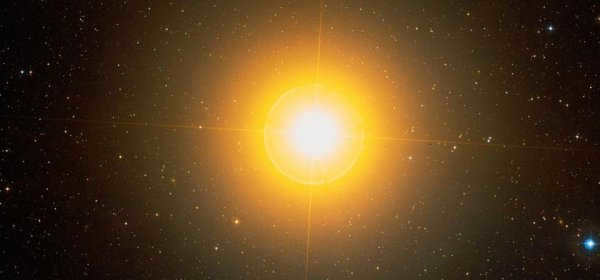
A celestial body with various names
The celestial body known as Aldebaran has been given a number of names throughout history:
In Arabic, it is referred to as “Aldebaran,” which translates to “following” or “follower.” In addition, it is associated with the festival of Palilia in honor of the ancient Roman god of shepherds, Pales, and is known as “Palilia.”
Ancient Persians regarded Aldebaran as one of the Guardians of the Heavens and a member of the group of Royal Stars. This cosmic entity has been revered by the Persians for centuries and is believed to possess extraordinary qualities.
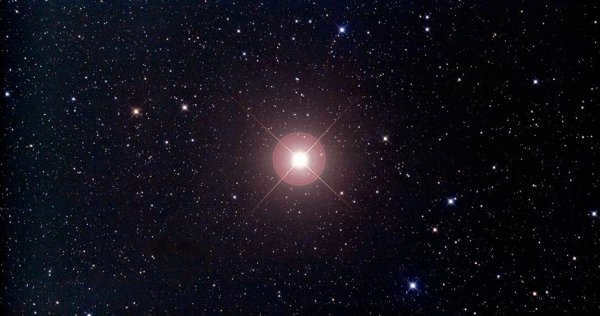
In 1972, the spacecraft Pioneer-10 was sent into space with the purpose of reaching the star Aldebaran. Along with its scientific equipment, the spacecraft also carries a message that provides information about life on Earth and the structure of our solar system. The mission of the spacecraft is expected to conclude in 2 million years.
Unique Characteristics of Aldebaran
Aldebaran is ranked 14th in terms of luminosity among all celestial bodies. Its luminosity measures at -0.63. The distance between Aldebaran and our planet is approximately 65 light years. In terms of luminosity, Aldebaran surpasses the Sun by a factor of 150.
Aldebaran is a stationary star that exhibits a distinct orange-red color. It stands out easily in the night sky. To locate Aldebaran, one can start by identifying the three stars that make up Orion’s belt and then proceed from left to right. Aldebaran will be the first star encountered along this path.
Aldebaran and its significance in astrology
Taurus is closely associated with the star Aldebaran, which is known for its connection to wealth and prosperity. Often referred to as the “guardian of the East,” Aldebaran is believed to bring about the fulfillment of plans. Astrologers place great importance on the alignment of this star with other planets in an individual’s horoscope.
Aldebaran has the potential to bestow wealth upon a person, but it is important to be cautious of the pitfalls that come with the pursuit of money. In the pursuit of riches, one may neglect moral values and lose touch with their spiritual side. This star carries significant meaning in personal natal charts as well as in the horoscopes of nations, signifying the birth or creation of something new.
It will take you approximately 7 minutes to read this.
Feel free to share this.

- Birth chart analysis
- Interpersonal astrology
- Personal growth and psychology
- Future predictions based on astrology
- Horoscope readings and forecasts
- Astrological symbols and amulets
- Discovering your soul’s essence
- Numerology and its significance
- Astrology-inspired tarot readings
- Global astrology and its impact
- Astrology tips for beginners
- Advanced astrology techniques
- Becoming a skilled astrologer
Estimated reading time: 7 minutes
There are countless stars and celestial bodies that we observe in the sky, but not all of them are considered in astrology. Only a select few fixed stars are deemed important and play a significant role. One such star is Aldebaran, which has been of great interest to thinkers throughout history. In ancient times, the Persians ranked Aldebaran as one of the Royal Stars. Aldebaran is a red star and is the brightest star near the cluster of Hyades, which is often referred to as the “Weepers” because it was believed that when the sunrise and sunset coincided with the Hyades, it would rain. The Sun aligns with them in late May and early June.
Importance of Aldebaran as a Celestial Body
Aldebaran, a prominent celestial object in the northern hemisphere, holds great significance. Found in the zodiacal constellation Taurus, northwest of Orion, it stands out in the night sky. With its first magnitude brightness, Aldebaran shines much brighter than most stars. In fact, it is tens of times larger and more luminous than our own Sun. Notably, Aldebaran not only outshines other stars in the Taurus constellation, but it also ranks as one of the most brilliant stars in the entire night sky.

The star Aldebaran, known officially as the “follower, following” in Arabic, holds more than one name. Positioned in the head of Taurus, it goes by the titles Eye of Taurus and Eye of the Head. Ptolemy referred to it as Lamparus, signifying torch or lighthouse. Another name, Palilia or Palilicium, connects it to the ancient Roman festival on April 21, which celebrates Pales, the shepherd deity and patron of goats and sheep. The ancient Persians recognized Aldebaran as one of the four Guardians of the heavens – the Guardian of the East.
In the realm of astrology, Aldebaran holds significant importance as one of the fixed stars.
During the astrological analysis of natal charts involving fixed stars, the focus is on the exact conjunctions of the stars with the planets. The orbis of connection with a first magnitude star is considered to be up to 1.5-2 degrees, no more. Additionally, the conjunctions of the star with the ascendant and the MC are of great importance. By examining these configurations, it is possible to interpret how they may manifest in a person’s life. The influence of this configuration can be especially significant when the star is conjunct the personal planets, particularly the Sun and Moon, as well as the Ascendant.

When Aldebaran aligns with the Sun, Moon, Mercury, Venus, Jupiter, Ascendant, and MC, it often grants wealth and honors to individuals through their magnetism, charisma, and charm. However, it is crucial to remain mindful of one’s soul and morality, avoiding deceit and dishonesty towards others. Failure to do so may lead to a significant downfall. On the other hand, if Aldebaran aligns with Mars, Saturn, Uranus, Neptune, or Pluto in the birth chart, it can have destructive consequences, including danger, risk, and potentially violent death. Nevertheless, it is important to analyze the individual’s chart to fully understand the potential positive and negative effects.
Myth of the Taurus Constellation
In order to gain a deeper understanding of the celestial body, it is beneficial to delve into the fascinating world of Ancient Greek mythology and explore the captivating tale of the bull. According to ancient legend, Zeus, the mighty ruler of the gods, ascended to the skies in the guise of the Taurus constellation, with its shining star Aldebaran serving as its radiant eye.
Once upon a time, there was a tale of Europa, the daughter of the ruler of the Phoenician city of Sidon. In a picturesque meadow, Europa found herself surrounded by her companions, joyfully picking flowers and reveling in the delightful spring day. She possessed a youthful and radiant beauty that rivalled even Aphrodite herself. Her friends paled in comparison to her, and her infectious laughter resounded through the meadow. Gazing down from the heavens, Zeus was captivated by this enchanting scene and found himself falling deeply in love with the exquisite girl. Determined to make her his own, he descended to Earth, taking the form of a bull. However, this was no ordinary bull; it was a magnificent creature with a gleaming coat, a silver star adorning its forehead, and majestic horns resembling a crescent moon.

Aldebaran, first and foremost, advocates for potent energy, longing, immense affection, and emotions.
However, there exists an alternative aspect to this narrative, as the events in the myth unfolded through deceit. Zeus cunningly abducted Europa, and furthermore, carried out his actions covertly, without the knowledge of his wife Hera. Life may hold its fair share of “repercussions” following such “achievements”. This is the wisdom imparted by the energy of the Aldebaran star.

Let’s take a closer look at the myth. As for the representation of the bull in the myth – Taurus – it is linked to endurance, strength, and power. The bull embodies both feminine and masculine energies, representing the balance between yin and yang, the lunar and solar. The male aspect represents pressure, stubbornness, diligence, hard work, protection, and a powerful driving force. It symbolizes fertility, seed, and the beginning of life. On the other hand, the female aspect embodies charm, care, sexuality, conception, nurturing, and nourishing offspring. It symbolizes the ability to receive energy, motherhood, and abundance. The symbolism of the Sun and Moon is often associated with the bull in various cultures and societies. This energy is particularly relevant to the zodiac sign of Taurus, which is represented by the constellation of Aldebaran. However, the star itself will be discussed separately.

About the Eye of Taurus. According to this tale, the eyes of Zeus in the form of a bull played a significant role, instantly captivating the girl with his gentle gaze. In this context, the eyes represent the source of an inner spiritual radiance, where a glance communicates much more about a person’s essence, intentions, and desires. It can be said that Aldebaran has the power to bestow upon an individual incredible magnetism, sexuality, and allure, which they can utilize to accomplish their objectives. They can wield this charm both consciously and subconsciously. A person essentially attracts the right individuals, connections, and circumstances into their life.
Some examples of individuals who fit this description are Marilyn Monroe and Clint Eastwood. They possess qualities such as beauty, attractiveness, fame, wealth, and popularity. They are beloved by the public and are considered sex symbols of their era. Just a single glance at these individuals is enough to ignite the hearts of their countless fans.
The Influence of Aldebaran in the Natal Chart
It is worth noting that there have been numerous individuals throughout history whose natal charts do not indicate a natural inclination towards being a ladies’ man or a femme fatale. Despite this, their personal planet is in conjunction with Aldebaran, resulting in them exhibiting an irresistible allure and garnering immense popularity in matters of love.
In some cases, the star’s energy can be expressed through the symbolism of Mars, when an individual channels all of their determination, vitality, and force into a particular action or endeavor, fully dedicating themselves to it. This could take the form of a sport, a business venture, or a groundbreaking idea. Oftentimes, individuals who possess this level of drive and focus leave behind a lasting legacy, whether it be in the form of books, films, an autobiography, or a thriving business that continues to thrive even after their passing. Alternatively, their impact may be measured in terms of fame and the enduring enigma surrounding their life and death, which continues to capture the public’s fascination for years or even decades. A prime example of this is Marilyn Monroe, who, in addition to her artistic achievements and widespread popularity, left behind an unsolved mystery surrounding her untimely demise that continues to intrigue people to this day.

In the natal chart, Aldebaran is often linked to the origin of disaster, adversity, and frequently tragic demise according to numerous astrologers.
There are differing opinions among astrologers regarding the association of Aldebaran with calamity, misfortune, and violent death. Some experts attribute these dangers and failures solely to Aldebaran itself, while others consider it in conjunction with another bright star, Antares, the Guardian of the West. Aldebaran is traditionally seen as malefic, and both stars are in opposition to each other. This opposition may explain why the luck, endurance, and incredible achievements that can be accompanied by Aldebaran can be counterbalanced by the more militant and risky energy of Antares, where the price of fame can become very high. As a result, a person may experience an incredible rise, followed by shame and ruin. Antares can also indicate the possibility of a violent death, which may come from fire, weapons, or machinery.

An excellent illustration of the impact of the star Aldebaran opposing Antares is John F. Kennedy, the 35th president of the United States. Firstly, he stands as an individual who lacks any direct indications in his astrological chart to be a man who captivates the hearts of all and conquers ladies. Despite having a feeble Mars in Taurus, Sun in Gemini, and a conflicting Moon and Venus, he managed to become the beloved figure of women across the nation, ultimately becoming the most charming president in the history of the United States. Remarkably, his astrological chart features the Sun in conjunction with Aldebaran. Secondly, his tragic demise occurred on November 22, 1963, when he suffered fatal wounds from two gunshots.
Estimated reading time: 9 minutes
Share

- Natal Astrology
- Relationship Astrology
- Self-development and psychology
- Predictive Astrology
- Horoscopes and Predictions
- Talismans
- Soul Formula
- Numerology
- Astrological Tarot
- World Astrology
- For beginners
- For professionals
- Development of an Astrologer
Read 9 min.
In the vast expanse of the night sky, countless stars and celestial bodies can be seen, each with its own significance in astrology. However, there are only a select few fixed stars that hold particular importance, such as the star Aldebaran.
With its vibrant and fiery hue, Aldebaran has long captivated the fascination of astronomers and astrologers alike. It is intertwined with a captivating myth of Zeus’s affection for the youthful Europe. However, this celestial body also carries a sense of peril, particularly when it opposes the star Antares. This combination is aptly referred to as the axis of calamities. Should one be wary of Aldebaran’s presence in their natal chart? Discover the answer to this question and more below.
The primary characteristics of the star Aldebaran
Aldebaran, also known as Alpha Taurus, HR 1457, and HIP 21421, is a star that is more than 6.5 billion years old. It is distinguished by its orange color and is considered one of the brightest stars in the night sky. Aldebaran has captivated observers for over three thousand years due to its close proximity to the solar system and its immense size. Located 65 light-years away from Earth, Aldebaran has undergone significant changes throughout its existence. It is believed that the star has consumed all of its hydrogen and started burning helium, resulting in a change in its luminescence from red to orange.

Aldebaran’s luminosity is approximately 425 times that of the Sun. This is due to its mass, which is 50 percent greater than that of the Sun. These factors have caused changes in the star’s appearance, including its size (up to 44 times the diameter of the Sun) and temperature. Many science fiction authors have referenced this prominent star in their books, while amateur astronomers find anything related to Aldebaran fascinating.
When observed with a modest telescope, it may appear that Aldebaran is part of the Hyades star system. However, it is actually a solitary giant, with the closest star to it being 20 light years away. This distance is twice as close as the Hyades star system, confirming its status as a separate entity.
The temperature of the star Aldebaran is significantly lower than that of the Sun, measuring at +3,700 °C. Despite this, it emits a stunning orange glow. According to the European Space Agency, there is a small celestial body in orbit around this gigantic star. Astronomers theorize that Aldebaran may also be home to the immense exoplanet Aldebaran b, which is six times larger than Jupiter.
Etymology
The name of the star has its origins in Arabic. Al Dabaran, when translated literally, means “follower”. This name was given to the star because, when observing the night sky, it appears that the planet is moving behind the Pleiades cluster. Despite having been known by this name for centuries, it was officially recognized by the astronomical union in 2016.
Aldebaran can be found in the Taurus constellation.

There are multiple perspectives on the Taurus star cluster. Some ancient civilizations associated Taurus with a bull, while others depicted it with the head of a buffalo. Northern cultures, on the other hand, often represented Taurus as a polar bear with Aldebaran as its guiding star.
Aldebaran, the red star, held great significance in Persia as one of the Royal Stars and Heavenly Guardians. It was believed to possess divine properties and could grant individuals with powerful energy and honor. However, it was also thought to contribute to a lively and unpredictable temperament. Additionally, ancient astrologers observed that when the Sun and the Hyades align during sunrise or sunset, it usually rains. This alignment occurs at the end of May and the beginning of June.
Aldebaran’s Celestial Presence
While the vast expanse of the sky is adorned with countless stars and celestial bodies, astrology focuses on those that hold significant influence. Aldebaran, a prominent star, stands out among the rest and is easily visible in the night sky. It holds a prominent position not only in the constellation of Taurus but also in the entirety of the nocturnal firmament. Amateur astronomers can easily identify it by its distinctive reddish hue and its position nestled between the constellations of Orion and the Pleiades star cluster.

Aldebaran often goes unnoticed due to its proximity to the Moon’s path, which is the circular path traced by the Earth around the Sun.
The Position of Aldebaran in the Natal Chart
Astrologers and philosophers have different opinions on the influence of the star Aldebaran in relation to the energies of known planets. Some believe it possesses qualities similar to Mars, while others argue that it embodies the energies of Mars, Mercury, and Jupiter.
This celestial entity confers immense power and opportunities to its possessor, provided they remain truthful and resist certain temptations. However, when describing its characteristics, it is widely believed that the star Aldebaran in one’s birth chart grants eloquence, steadfastness, bravery, intellect, tenacity, rebelliousness, and resilience. It foretells extraordinary success in one’s profession, including fame, honors, and wealth.
Those individuals who possess this celestial entity in their horoscope must bear in mind that such advantages can easily be replaced by ruin and downfall if a sense of proportion is lacking. A lofty position can only be attained through purity of thoughts and actions. Along the journey, you will constantly encounter temptations that contradict your personal morality, which will jeopardize your standing if you deviate from your internal principles. Any compromise of your character will result in irreparable harm to your future.
According to astrology, individuals who are influenced by the star Aldebaran possess a strong set of moral principles that will ultimately lead to success in their endeavors. It is crucial not to abandon these beliefs, as doing so may result in the loss of one’s position or standing.
Furthermore, this particular star grants its recipients with an extraordinary level of popularity, charm, sexuality, and overall attractiveness, all of which can be harnessed to achieve personal goals. In addition, individuals under the influence of Aldebaran have a knack for making valuable connections and forming trustworthy friendships.

What characteristics does the individual possess when the star Aldebaran is in conjunction with:
The Sun.
This combination enhances the aspect of leadership. An individual holds significant influence, and their opinions are considered authoritative. They typically hold high positions, but while ascending to this peak, they accumulate many enemies who eagerly await their downfall. The person is capable of making decisions in the best interest of their community. There is a risk of a violent death. The individual constantly teeters on the edge of success and failure. The combination with the Sun and Mars exposes the bearer of Aldebaran to the danger of contracting infectious and inflammatory diseases.
This combination will have a positive impact on one’s professional trajectory.
The nativus possesses opportunities and societal positions they aspire to attain. If the star Aldebaran occupies either the first or tenth house, they will receive recognition and esteem from the community. However, there may be adverse consequences such as health issues, accidents, or disturbances affecting the representative’s family. In certain cases, it may indicate exposure to toxic substances.
Mercury.
When it comes to this combination of planets, it gives the individual a chance to gain favor with their surroundings, which in turn can lead to career advancement, financial gains, and trustworthy friendships. However, there may also be some negative aspects such as health issues and family unrest.
Venus.
This combination of planets is unique to individuals with a creative inclination. Venus grants immense triumph in the realm of music, fine arts, and literature, enabling one to attain a prestigious standing in social engagements. Additionally, this planetary alignment promotes robust health and fosters a solid familial bond.

Mars.
The combination known as the “Rattlesnake” is associated with numerous hazards, intrigue, and malicious intentions towards the bearer of the Aldebaran star. With their intelligence and swift reactions, individuals with this combination are adept at navigating complex and dangerous situations. Mars indicates potential problems with the law, adversity, family difficulties, inflammatory illnesses, and a violent demise caused by cold weaponry.
A positive aspect, which allows the individual to be identified as a leader in the public domain, and may even lead to receiving accolades from the church or achieving military rank.
Saturn.
This combination serves as a warning to be cautious around water, as Saturn has the potential to create dangerous situations such as floods, tsunamis, shipwrecks, or drowning. Life will be filled with challenging obstacles. The person with this aspect is known for having a good memory, being reserved, curious, and experiencing good fortune at home and in their career. The presence of the Moon with Antares indicates a potentially violent death, possibly by hanging.
Uranus: The Planet of Uniqueness
This characteristic is exclusive to scientists, as it instills a deep adoration for the natural world, a knack for efficiency, a critical mindset, and a special fascination with enigmatic and unexplored forces and phenomena within humans, nature, and the universe. Unfortunately, due to this unconventional curiosity, individuals with this aspect may develop a negative reputation. Moreover, they often find themselves anticipating an unexpected demise.




Neptune.
This combination of celestial bodies bestows the individual with a keen intellect, artistic talents, and medical skills. However, it also cautions that finding domestic bliss may prove challenging and there is a potential risk of loss due to fire or unfortunate circumstances leading to death.
Additionally, it warns that having ambitious aspirations may result in unfavorable outcomes, even potentially attracting assassination attempts. On a positive note, it suggests that the individual has the potential to become a influential figure in shaping public opinion and may have a high likelihood of attaining a leadership position.
Wheel of Fortune or its manager.
Moneylessness and constant worries associated with this.
A malefic planet in the 4th, 6th, 11thI or 12th house when the Moon is in conjunction with Antares.
This conjunction signifies a violent death caused by a stabbing injury.
The star Aldebaran and the axis of calamities
The star Aldebaran is believed to be the origin of misfortunes.
It is widely believed that the star Aldebaran holds a malevolent power. It is often associated with tragic deaths caused by accidents, weapons, or fires. When influenced by other planets in an individual’s horoscope, this “axis of calamity” may lead them towards dabbling in dark magic, engaging in sinister plots, and meddling in the lives of others. Despite appearing outwardly calm and content, the individual may feel a sense of unease. They may encounter dangerous situations, such as being involved in a serious accident just days before an important event.

To visually observe the impact on human existence of the star Aldebaran opposing Antares, let us recall the destiny of the 35th President of the United States John F. Kennedy, who was adored by women all across America, despite no indications of such interest in his birth chart. Tragically, he met his demise as a result of a gunshot. On that fateful day, transiting Mercury was traversing the precise degree of Antares, forming an opposition with the president’s natal Sun. Additionally, Mercury in the horoscope showered John with plots, intrigues, clandestine adversaries, crises, and unforeseen circumstances. The culmination of these factors culminated in a public assassination.
The activation of events triggered by the “axis of catastrophes” is often irreversible and has a global impact. Astrologers advise individuals with this aspect to exercise caution during periods of maximum alignment between the star Aldebaran and Antares.
The magnificent giant star Aldebaran, renowned since ancient times, has an estimated age of 6.6 billion years. The renowned astronomer Claudius Ptolemy referred to it as Lamparus, while another known name is Palilius. It is the brightest star within the entire Zodiac. Its Arabic name translates to “follower” or “following,” as it follows the Pleiades in the night sky.
Aldebaran, situated within the Taurus constellation, resides in the head of the celestial bull, specifically in the location of its eye, which is why it is sometimes referred to as the bull’s or ox’s eye.
It’s a binary star system
Comparing the sizes of the Sun and Aldebaran
Aldebaran A is a giant orange star with a fluctuating brightness due to ongoing processes. It is considered an irregular variable star. In terms of size, it surpasses our Sun with a radius 43 times larger and a mass 2.5 times heavier. Its luminosity is also 150 times greater than that of the Sun, ranking it fourteenth in terms of apparent brightness. With a temperature reaching 4000 K, it is located 65 light-years away. Even the Pioneer 10 spacecraft, launched in 1972, would take two million years to reach this star. Just think about the immense scale of the universe!
Aldebaran B, a companion star, is located a few hundred astronomical units away. It is classified as a red dwarf and has a radius and mass that are approximately 0.44 times that of the sun. It has a luminosity of 0.035 and a temperature of around 3600 K. The properties and behavior of stars in this category are still not well understood.
Another member, Aldebaran A b, was discovered relatively recently. This exoplanet is preliminarily determined to have a size slightly smaller than Jupiter and a mass 6.47 times greater. It takes around 629 days to complete one revolution around Aldebaran, at a distance of 218,412,892 kilometers.

Characteristics of Aldebaran star
Facts and legends about Aldebaran
In 1972, the Pioneer-10 probe was launched, which is set to journey to Aldebaran after leaving the solar system. It carries a message containing a standardized description of life forms on our planet and the structure of the solar system. If its mission is successful, it will complete its journey in 2 million years. It has been over 10 years since Pioneer-10 last made contact.
A wealth of information about Aldebaran has been gathered thanks to the American satellite Hipparcos. It operated in outer space for over a year and a half starting from 1989. The satellite accurately determined the distance between the Sun and this star.
Have you observed the phenomenon known as Hubble’s Law?
In his literary works, Stanislav Lem also makes references to the celestial body called Aldebaran. Lem envisions a whole inhabited system that lags far behind the development of Earth civilization.
Aldebaran, a star that is associated with the vernal equinox, held significant importance in ancient Babylon. It marked the beginning of the zodiac and was celebrated during New Year festivities. In those times, Aldebaran was referred to as “the Predictor” because it was believed that the fate of the state for the upcoming year could be revealed during this period. Despite the changing positions of the star in relation to the zodiac signs over the centuries, the tradition of making astrological forecasts for the next 12 months during the spring equinox has endured.
Legend has it that the constellation Taurus was formed in honor of Zeus, who transformed into a bull and abducted the beautiful Europa, who later became his wife.
African tribes believe that Aldebaran is the hunter and spouse of the Pleiades. The wives convinced Aldebaran to hunt down a zebra. He was not allowed to return home until he caught the animal. Aldebaran set out on the hunt, but he only had one arrow. Unfortunately, luck was not on his side that day and the arrow missed its target. Since then, Aldebaran has been following the Pleiades, afraid to go back home.
How to locate it
The ideal seasons for observation are winter and spring. To find it easily, first locate the three stars in Orion’s belt. Then, draw a straight line to the right through these stars and you will come across the brightest star, which is Aldebaran. Aldebaran serves as the alpha star of Taurus, a zodiacal constellation. In addition to Aldebaran, the constellation also includes two clusters known as the Pleiades and the Hyades. When viewed from Earth, it may appear that Aldebaran is part of the Hyades cluster, as the cluster’s bright stars form a V shape. However, this is actually an optical illusion, as the cluster is positioned much farther away, approximately 153 light years from us.


Are you wondering how to find the star Aldebaran?
References[ ]
- Massarotti A., Latham D. W., Stefanik R. P., Fogel J.
Rotational and radial velocities for a sample of 761 Hipparcos giants and the role of binarity // // Astron.
Astron. J.
/ J. G. III – IOP Publishing, American Astronomical Society, 2007. – Vol. 135, Iss. 1. – P. 209-231. — ISSN 0004-6256; 1538-3881 — doi:10.1088/0004-6256/135/1/209 - Falkner, David E.
The Winter Constellations // The Mythology of the Night Sky. — 2011. — С. 19—56. — (Patrick Moore’s Practical Astronomy Series). — ISBN 978-1-4614-0136-0. — doi:10.1007/978-1-4614-0137-7_3. - Richard H. Allen.
The Significance and Symbolism of Star Names. — Publisher Corporation, 2013. — Page 284. — ISBN 978-0-486-13766-7. - IAU Catalog of Star Names (n.d.)
. Retrieved July 28, 2020. - IAU Working Group on Star Names (WGSN) (n.d.)
. Retrieved May 22, 2020. - Terence Dickinson.
NightWatch: A Practical Guide to Observing the Universe (Eng.). — Firefly Books, 1998. — P. 56—. — ISBN 978-1-55209-302-3. - Star Maps were generated using XEphem.
LASCO Star Maps (identify celestial objects visible on any given day)
(unverified)
(link not available). Large Angle and Spectrometric Coronagraph Experiment (LASCO) (2008). Accessed June 1, 2012. Archived June 30, 2012.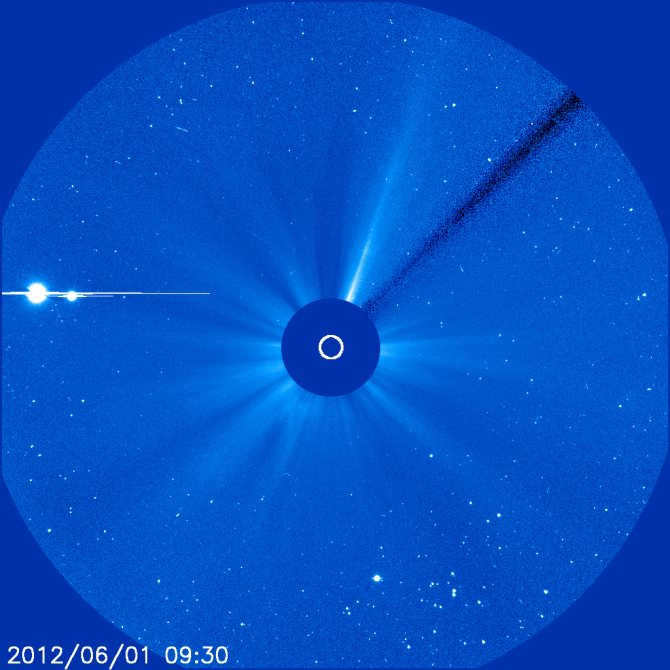
&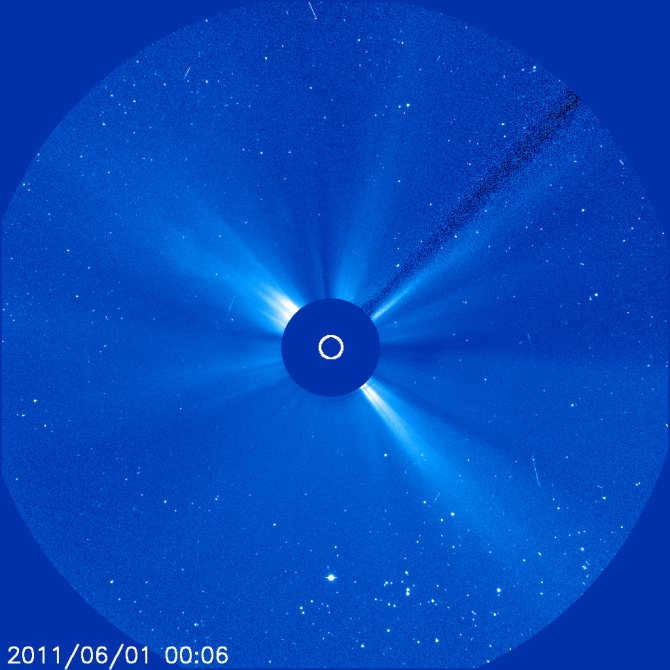
- A colossal gas giant has been detected near Aldebaran
- Query= alf Tau (not published)
.
General Catalogue of Variable Stars
. Center de Données astronomiques de Strasbourg. Date of publication December 16, 2009. - G. P.; Können; Meeus, J.
Series of occultations of five stars (English) // Journal of the British Astronomical Association. : journal. – 1972. – Vol. 82. – P. 431. – Bibcode: 1972JBAA…82..431K. - White, N. M.
Lunar occultation of the Hyades and measurements of the diameters of Alpha Tauri and Theta-1 Tauri // The Astronomical Journal : journal. – IOP Publishing, 1979. – June (vol. 84). – P. 872-876. – doi:10.1086/112489. – Bibcode: 1979AJ…..84..872W. - Long-lasting, long-period variations in radial velocity in Aldebaran: A planet companion and stellar activity (unpublished).
(link not available). Accessed May 16, 2020. Archived May 23, 2020. - Füzuli, M. Əsərləri / Edited by T. Kerimli. – B. Şərq-Qərb, 2005. C.170
- Moon coverage of Aldebaran: photos and video by our readers (not yet published)
(link not available). Accessed on October 10, 2020. Archived on September 29, 2020. - A Muscovite captured the daytime coverage of Aldebaran by the Moon
Royal Stars
Let’s start by considering the royal stars that cause great confusion among students. Lilly provides a list of six stars of “royal importance.” All of them are first magnitude, except for Zuben Elgenuby, and all of them are close to the ecliptic. These stars are: (Alebarari) – 9 Gemini Royal stars – the six mentioned above and only them. Despite being the brightest, Sirius is not one of them. Despite being one of the four axial stars that mark the quarters of the sky, Fomalgaut does not belong to them. “Why is that?” Sirius is too far from the ecliptic (39′ south). To be considered royal, a star must be on the ecliptic because the Sun is the main symbol of royalty. And the nature of Sirius is not royal: if the Lion Heart is suitable for the king of the Mouth of the Dog, definitely not. Fomalgaut is indeed a royal star, but its realm is not of this world. This star is associated with the winter solstice and therefore with the birth of Christ. The Magi expected to find the newborn king in a palace, but he was born in a stable and never crowned with an earthly crown. Fomalgaut is as powerful as any of the royal stars, but it does not elevate to the throne. Such elevation is a function of the royal stars. We look at the hits of the Ascendant, the MC, their rulers, or one of the luminaries on these stars. The allowable deviation is about 5 degrees before or after, subject to the usual “the closer the stronger” rule. Treat them as trumps in a card layout. The heir to the throne has a strong hand by birth position; and if his rival’s card is not marked with royal stars, the heir may ascend the throne. But if there are no royal stars in the heir’s chart, but the next in line has them, the heir has reason to worry. One way or another, the throne may be inherited by the second claimant. Remember that you don’t need a perfect chart to win the game: you just need better cards than your opponent. Just because the natal chart of the grocer’s son is filled with royal stars does not mean he will be king – although the grocer’s daughter did have an impressive set of stars in her birth chart: Ascendant on Zuben Elgenuby, Lord MC on Spica, Moon on Regulus. With these trumps in hand, their possessor will be able to rise within her own social circle; there are too few vacancies in the palace, however, so most will have to satisfy their desires elsewhere. These stars do not guarantee a royal career, but in the struggle for promotion, the one who possesses them will defeat the one who does not. Descendant or their rulers on a royal star is useless. A Descendant or Lord of the 7th on such a star may indicate marriage to royalty, but not the elevation of the person born on his own. It may seem that Zuben Elgenuby violates this glittering list by being a star of only third magnitude. It is Southern Librae, the brightest star in the southern bowl of Libra, and although it has been named A-Librae, it is dimmer than Librae, the brightest star in the northern bowl of Libra. But this was not always the case. Apparently this star has dimmed in recent centuries. According to Copernicus, for example, Zuben Elgenuby is brighter than second magnitude stars, quite a bit short of first magnitude, and brighter than P-Librae. It also has the advantage of being right on the ecliptic. Regardless of its appearance, its capacity for prominence has remained unchanged. The birth of General Musharraf, ruler of Pakistan, exemplifies the power of these stars. The lord of the Ascendant is on Aldebaran, the MC is on Spica, and the lord of the MC is on Pollux. To even the score, Mercury, ruler of his Mars, is on Regulus, and Jupiter is on Sirius. While Sirius is not listed as a royal star, the ability to roar loudly is no hindrance at all for a soldier eager for power. Musharraf’s chart is even more militant than this fierce group proclaims. The ascendant is on Phacis, a star of the nature of Mars and the Sun, and therefore very appropriate for a commander of soldiers. Both Aldebaran and Pollux are of the nature of Mars. And yet Mars itself is highlighted by its location on the North Node and its connection to the angles of the chart – a close trine to the Ascendant and antis to the MC/IC axis. This Mars is Mercurian: he commands others rather than imitating the behavior of the tiger himself. Musharraf’s Mars can be compared to William Lilly’s Mars in the same degree of Virgo, albeit on the Descendant: a fierce debater, attacking with words rather than swords or fists.
Education March 18, 2014
Aldebaran, also known as α Tauri (Alpha Tauri), is a massive orange star located approximately 65 light-years away from the Sun in the zodiac constellation Taurus. It serves as the primary source of light in Taurus and is typically the fourteenth brightest star in the night sky, although its brightness gradually fluctuates between 0.75 and 0.95. Scientists have discovered a planet orbiting Aldebaran, named Aldebaran b, which is several times the size of Jupiter.
Aldebaran is classified as a red giant, meaning it has a lower temperature than the Sun, measuring at around 3900 K. However, its radius is approximately 44 times larger than that of the Sun, making it over 400 times more luminous. The star rotates at a slow rate, completing a full revolution in 520 days.
The Pioneer 10 space probe is currently headed towards Aldebaran and is expected to reach its vicinity in approximately two million years.
Classification
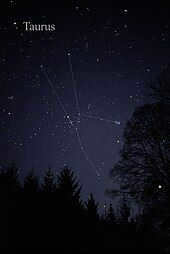
Aldebaran is the most luminous star in the constellation Taurus (center).
The star’s traditional designation, Aldebaran, is derived from the Arabic al Dabarān ("الدبران"), meaning "the follower," as it appears to trail behind the Pleiades. The International Astronomical Union’s Working Group on Star Names (WGSN) officially adopted the name Aldebaran for this celestial body in 2016.
Aldebaran, the brightest star in the constellation Taurus, is designated as α Tauri in Bayer notation. It is also known as the 87th star in the constellation with a designation of Flemstid 87 Taurus, based on its magnitude of 7th or brighter in direct ascension order. Additionally, it is cataloged as star number 1457, HD 29139, and Hipparcos 21421, making it a frequently referenced star in scientific publications.
While Aldebaran is a variable star listed in the General Catalog of Variable Stars, it is identified using its Bayer designation and does not have a separate variable star designation.
Aldebaran and a number of neighboring stars are listed in various double star catalogs, including the Washington Double Star Catalog as WDS 04359 + 1631 and the Aitken Double Star Catalog as ADS 3321. It was featured in the eleventh catalog as a companion to another star, such as H IV 66 in the Herschel Double Star Catalog and Σ II 2 in the Struve Double Star Catalog, and along with a 14th magnitude star as β 550 in the Burnham Double Star Catalog.
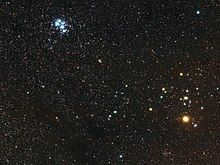
Aldebaran can be easily spotted in the night sky due to its brightness and close proximity to a prominent asterism. If you follow the three stars of Orion’s belt in the opposite direction of Sirius, you will come across Aldebaran as the first bright star. Interestingly, Aldebaran appears to be the brightest member of the scattered cluster known as the Hyades due to its alignment with Earth, but the actual cluster that forms the bull’s head-shaped asterism is located much farther away, approximately 150 light-years.
Aldebaran can be covered by the Moon due to its position 5.47 degrees south of the ecliptic. These occurrences happen when the Moon’s ascending node is close to the fall equinox. A total of 49 eclipses took place between January 29, 2015, and September 3, 2018. People in the northern hemisphere or near the equator could witness each event, while those in Australia or South Africa were unable to observe the Aldebaran eclipse due to its location too far south of the ecliptic. The eclipse on September 22, 1978, provided a reasonably accurate estimate of Aldebaran’s diameter. Aldebaran aligns with the Sun around June 1 every year.
Observational History
The history of observation dates back to ancient times. People have always been curious about the world around them and have used their senses to gather information. From the earliest humans tracking animals for hunting to the invention of the telescope, observation has played a crucial role in our understanding of the universe.
In ancient civilizations, such as Egypt and Mesopotamia, observations were used for practical purposes, such as determining the best time for planting crops or predicting the flooding of the Nile River. These early observations relied on simple tools, such as sundials and water clocks, to measure time and track celestial events.
The invention of the telescope in the 17th century greatly expanded our ability to observe the heavens. Astronomers like Galileo Galilei used telescopes to make groundbreaking discoveries, such as the moons of Jupiter and the phases of Venus. This new technology allowed scientists to observe objects that were previously invisible to the naked eye, leading to a revolution in our understanding of the universe.
Observation has also played a crucial role in the field of natural history. Naturalists like Charles Darwin used careful observation of plants and animals to develop theories of evolution and natural selection. By closely observing the world around them, these scientists were able to uncover the intricate web of relationships that govern life on Earth.
Today, observation continues to be a vital tool in scientific research. From studying the behavior of animals in the wild to monitoring changes in the Earth’s climate, observation allows scientists to gather data and make important discoveries. Whether it’s through the use of advanced telescopes or the simple act of watching and recording, observation remains a fundamental part of our quest to understand the world.
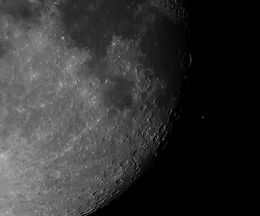
Observation of Aldebaran during the Moon’s coverage. Aldebaran, which appears as a red dot on the right side, can barely be seen in the thumbnail image.
In Athens, Greece, on March 11, 509 AD, astronomers witnessed a lunar eclipse involving Aldebaran. Edmund Halley, an English astronomer, carefully studied the timing of this event. In 1718, he concluded that Aldebaran had shifted its position slightly to the north, moving a few angular minutes. This discovery, along with observations of the changing positions of other stars like Sirius and Arcturus, led to the understanding of Aldebaran’s own motion. Modern observations indicate that Aldebaran has shifted approximately 7 feet over the past 2000 years, which is about a quarter of the diameter of a full moon. Due to the precession of the equinoxes, Aldebaran was close to the spring equinox in the Northern Hemisphere around 5000 years ago.
Aldebaran’s faint companion was first found by English astronomer William Herschel in 1782. It is an 11th magnitude star located at an angular distance of 117″. Later, in 1888, C. W. Burnham discovered that this star is actually a close double star. Burnham also found another companion, which is of 14th magnitude and located at an angular distance of 31″. Further observations revealed that Herschel’s companion was moving away from Aldebaran, indicating that they were not physically connected. However, the companion discovered by Burnham had a nearly identical proper motion to Aldebaran, suggesting that they are part of a wide binary star system.
In 1864, William Huggins conducted the first observational studies of Aldebaran’s spectrum at his private observatory in Tulse Hill, England. During these studies, Huggins was able to identify lines representing nine different elements, including iron, sodium, calcium, and magnesium. Later, in 1886, Edward S. Pickering of the Harvard College Observatory utilized a photographic plate to record fifty absorption lines in Aldebaran’s spectrum. These observations formed part of the Draper Catalog, which was published in 1890.
By 1887, advancements in photographic technology allowed for more precise measurements, including the determination of a star’s radial velocity through the magnitude of the Doppler shift in its spectrum. Using this technique, scientists estimated that Aldebaran had a falling speed of approximately 30 miles per second (48 km/s). These measurements were conducted at the Potsdam Observatory by Hermann C. Vogel and his assistant Julius Scheiner.
The angular diameter of Aldebaran was measured in 1921 using an interferometer attached to the Hooker telescope at Mount Wilson Observatory. However, these observations did not result in its resolution.
Due to its extensive observational history, Aldebaran was selected as one of the 33 stars to be used as landmarks for the Gaia mission in order to calibrate derived stellar parameters. It had previously been utilized to calibrate instruments on board the Hubble Space Telescope.
Comparing the sizes of Aldebaran and the Sun
Aldebaran serves as the standard for spectral classification of K5 + III stars. Its spectrum indicates that it is a giant star that has evolved from the main sequence region of the Hertzsprung-Russell diagram after undergoing significant hydrogen depletion. The star’s core collapsed into a degenerate helium core, which triggered the ignition of a hydrogen shell outside the core. As a result, Aldebaran is now located on the red giant branch (RGB).
Aldebaran’s photosphere has an effective temperature of 3910 K. It possesses a surface gravity of 1.59 cgs, which is typical for a giant star, but approximately 25 times lower than that of Earth and 700 times lower than that of the Sun. Its metallicity is approximately 30% lower than that of the Sun.
According to data from the Hipparcos satellite and other sources, Aldebaran is situated 65.3 light-years (20.0 parsecs) away. Researchers have used asteroseismology to determine that it is approximately 16% more massive than our Sun, but its luminosity is 518 times greater due to its expanded radius. The angular diameter of Aldebaran has been measured on numerous occasions, with the accepted value for Gaia reference calibration being 20.580 ± 0.030 mas. This measurement equates to a diameter 44 times that of the Sun, which is approximately 61 million kilometers in size.
Aldebaran, a star belonging to the slow irregular form enter LB, exhibits slight variability. According to the General Catalog of Variable Stars, historical reports indicate variations in apparent magnitude ranging from 0.75 to 0.95. However, modern studies suggest a smaller amplitude, with some showing almost no variation. Photometry from the Hipparcos satellite reveals an amplitude of only about 0.02 stellar magnitude and a possible period of approximately 18 days. Ground-based photometry conducted with high intensity reveals variations of up to 0.03 stellar magnitude and a possible period of around 91 days. Analysis of observations spanning a much longer period indicates that the overall amplitude is likely to be less than 0.1 stellar magnitude, and the variability is considered irregular.
The photosphere of Aldebaran displays high levels of carbon, oxygen, and nitrogen, indicating that the star has progressed into the red giant phase of its evolution. This phase involves the movement of matter from deep within the star to its surface through convection. Due to its slow rotation, Aldebaran does not possess the necessary dynamo to generate a corona and therefore does not emit hard X-ray radiation. However, there may still be small-scale magnetic fields present in the lower atmosphere, resulting from convective turbulence near the surface. The measured magnetic field strength on Aldebaran is 0.22 Gauss. Any soft X-ray emissions from this region may be weakened by the chromosphere, although ultraviolet emissions have been detected in the star’s spectrum. Aldebaran is currently experiencing mass loss at a rate of (1-1.6) × 10 M⊙ years (equivalent to approximately one Earth mass every 300,000 years) at a velocity of 30 km/s. This loss of mass may be caused by weak magnetic fields in the lower atmosphere.
The extended molecular outer atmosphere (MOLsphere) of Aldebaran lies beyond its chromosphere and has a temperature low enough for gas molecules to form. It has a radius approximately 2.5 times that of the star and maintains a temperature of around 1500 K. Analysis of its spectrum reveals the presence of carbon oxide, water, and titanium oxide. As the stellar wind continues to expand beyond the MOLsphere, it eventually encounters the boundary where it collides with the hot ionized interstellar medium, which dominates the Local Bubble. This collision leads to the formation of a roughly spherical astrosphere with a radius of about 1000 a.u., centered on Aldebaran.
Observing Satellites in Space
A cluster of five faint stars can be spotted in close proximity to Aldebaran in the nighttime sky. These binary star constituents have been identified using uppercase Latin letters, roughly corresponding to the sequence of their discovery, with the primary star being denoted as “A”. Various attributes of these constituents, such as their position in relation to Aldebaran, have been consolidated into a convenient table.
According to various studies, such as the Gaia Data Release 2, it has been suggested that Alpha Taurus B and Aldebaran have similar proper motion and parallax, indicating that they may be a physical binary system. However, due to the close proximity of the faint B component to the bright host star, it is challenging to accurately measure their connection and the margin of error is too large to definitively establish or rule out a physical association between the two. Currently, there is no conclusive evidence to confirm any physical association between the B component and Aldebaran. The spectral type M2.5 has been assigned to Alpha Taurus B.
CD Alpha Taurus represents a binary system consisting of gravitationally connected stars C and D, which revolve around each other in a shared orbit. These stars, found in the Hyades star cluster, are situated far away from Aldebaran and have no direct physical contact with it.
Planetary system
In 1993, the radial velocity measurements of Aldebaran, Arcturus, and Pollux indicated that Aldebaran displays periodic changes in its radial velocity, which could be interpreted as a substellar companion. The data for Aldebaran suggested the presence of a companion with a minimum mass 11.4 times that of Jupiter. This companion was estimated to be in an orbit of 643 days, at a distance of 2.0 a.u. (300 Gm), and in a slightly elliptical orbit. However, similar variations were observed in all three stars studied, leading the researchers to conclude that these fluctuations were likely caused by internal factors within the star, rather than the gravitational influence of a companion.

Observing the Big Dipper from the star Aldebaran.
In a study conducted in 2015, long-term stability was found in both the planetary companion and stellar activity. By analyzing the astroseismic residuals, it was determined that Aldebaran b has a minimum mass of 5.8 ± 0.7 Jupiter masses. Additionally, when the star was on the main sequence, it emitted light levels similar to those found on Earth, suggesting a potentially habitable temperature. This would have placed the planet and any of its moons in the habitable zone.
Aldebaran was initially known as نير الضبران (Nā᾽ir al Dabarān in Arabic), which translates to “the most brilliant of the follower”. The term al Dabarān (الدبران) was later applied to the entire lunar mansion that encompasses the Hyades. It is believed to have come after the Pleiades. Numerous transliterated variations have been employed, with the present-day Aldebaran becoming the accepted norm only in recent times.
This star, which is easily visible and bright, is the focal point of many ancient and modern myths.
- Mexican Culture: In the beliefs of the Seri people of northwestern Mexico, this star is said to provide light to seven women in labor (known as Pleiades). It has three names: Hant Caalajc Ipápjö, Queeto, and Azoj Yeen oo Caap (“the star that goes before”). The lunar month corresponding to October is called Queeto yaao, meaning “the way of Aldebaran.”
- Aboriginal culture: In the Clarence River region of northeastern New South Wales, this star is considered the ancestor of Carambal, who stole another man’s wife. The woman’s husband tracked him down and burned the tree in which he was hiding. It is believed that Carambal rose into the sky as smoke and transformed into the star Aldebaran.
Names in different languages
- In Hindu astronomy, he is known as Rohini, which means “red”, and is considered one of the twenty-seven daughters of Daksha and the wife of the god Chandra (Moon).
- In Ancient Greek, it was referred to as Lampadias, which literally means “torch-like or bearer”.
- In Chinese, it is called 宿 (Bì Xiù), which means “Network”, and refers to the group of stars that includes Aldebaran, ε Taurus, δ Taurus, γ Taurus, 71 Taurus, and λ Taurus. Thus, the Chinese name for Aldebaran itself is 畢 宿 五 (Bì Xiù wǔ), which translates to “Fifth Star of the Net”.
In modern society.

The Italian frigate F590 Aldebaran is one of many entities that have adopted the name Aldebaran or Alpha Tauri. This includes the Aldebaran Rock in Antarctica, the US Navy vessel USS Aldebaran (AF-10), and the proposed Aldebaran microsatellite launch vehicle. Other notable adopters include the French company Aldebaran Robotics, the fashion brand AlphaTauri, and the Formula 1 team Scuderia AlphaTauri (formerly known as Toro Rosso).
In addition to its real-world associations, the star Aldebaran also makes appearances in works of fiction such as Away from the Madding Crowd and Down and Out in Paris and London. It is a frequent element in science fiction, featuring in series like the Lensman series and Fallen Dragon. Given its status as the brightest star in the Zodiac constellation, Aldebaran holds significant importance in astrology.
Aldebaran is frequently mentioned in various conspiracy theories as being one of the possible sources of extraterrestrial life, often linked to Nazi UFOs. A notable example is the German conspiracy theorist Axel Stoll, who believed that this star served as the home for the Aryan race and was the objective of Wehrmacht expeditions.
The Pioneer 10 spacecraft, which was used for planetary research, is no longer operational or in communication with Earth. However, its trajectory is currently heading towards the general direction of Aldebaran. It is estimated that it will come close to the star approximately two million years from now.





